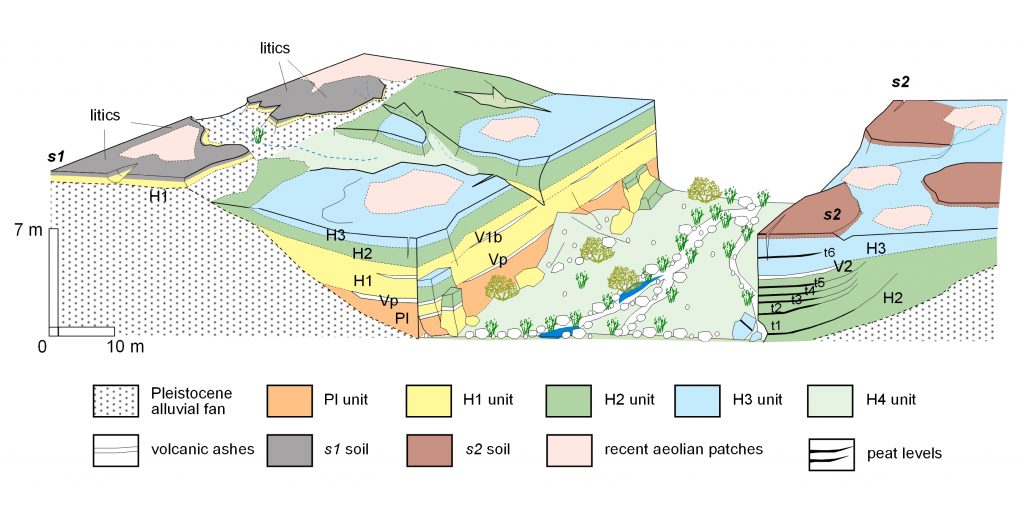Geomorphological and chronostratigraphical context of the La Sala Lithic artifacts (Amaicha basin - Northwest Argentina)
Peña-Monné, J.L., Sampietro-Vattuone, M.M., Báez, W.A., Sol, A., Somonte, C., 2020. Geomorphological and chronostratigraphical context of the La Sala Lithic artifacts (Amaicha basin - Northwest Argentina). Journal of Archaeological Science: Reports, 29 https://doi.org/10.1016/j.jasrep.2019.102168 |

ABSTRACT.
The objective of this paper is to make a detailed and multiproxy geomorphological study of the middle section of Amaicha River in Northwest Argentina. The obtained evolutionary model and chronological context will be linked with previous models to include the study area in a regional context. Finally, our model will be used as a morphochronological base to contextualize the lithic materials found in an area which previously lacked stratified records and absolute datings. The geomorphological study shows the high dynamic of the sector recorded in the ravine deposits during the Holocene. This process is reflected by the aggradation/degradation stages. A basal unit chronologically assimilated to the Pleistocene (Pl unit) is overlapped by four Holocene morphosedimentary units (H1 to H4). These units are arranged as terraces following an alternating succession of aggradative and degradative phases. The interbedding of tephra layers of known age, as well as radiometrically dated peat levels and soils, enables a very complete chronology of the Holocene sequence to be made. Lithic artifacts were found in the s1 soil, dated to 5468–4875 cal BP, providing one of the few records of stratified archaeological sites in the region for those times. This paper constitutes an initial approach in the development of a regional evolutionary model covering the period from the Late Pleistocene until the present.



